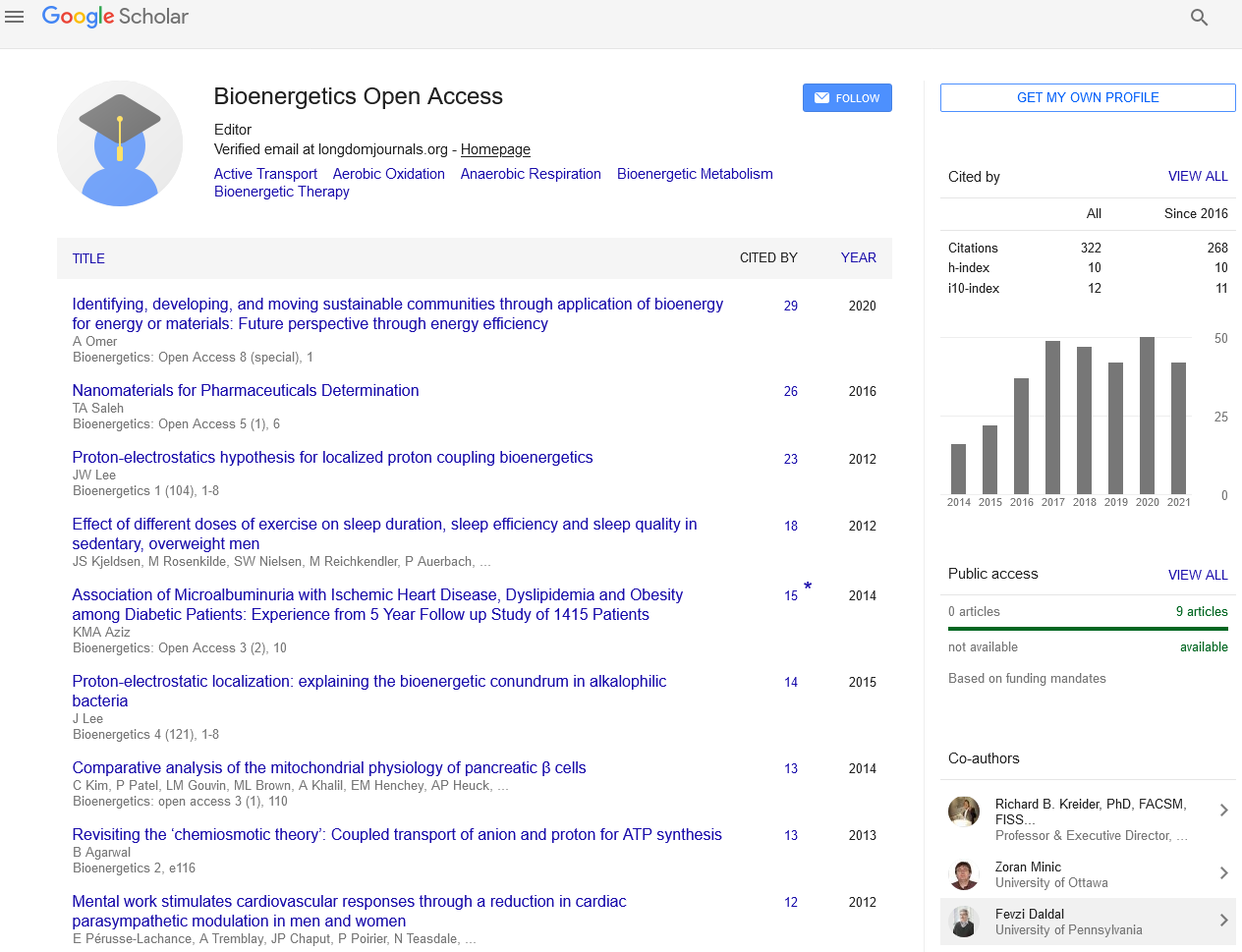Indexed In
- Open J Gate
- Genamics JournalSeek
- Academic Keys
- ResearchBible
- RefSeek
- Directory of Research Journal Indexing (DRJI)
- Hamdard University
- EBSCO A-Z
- OCLC- WorldCat
- Scholarsteer
- Publons
- Euro Pub
- Google Scholar
Useful Links
Share This Page
Journal Flyer

Open Access Journals
- Agri and Aquaculture
- Biochemistry
- Bioinformatics & Systems Biology
- Business & Management
- Chemistry
- Clinical Sciences
- Engineering
- Food & Nutrition
- General Science
- Genetics & Molecular Biology
- Immunology & Microbiology
- Medical Sciences
- Neuroscience & Psychology
- Nursing & Health Care
- Pharmaceutical Sciences
Abstract
Design and creation of composites between bacterial cellulose and cellulose of e crassipes modified with iron chloride and carbon disulfide for the removal of chromium (VI)
Uriel Fernando Carreño Sayago
The contaminated with Chromium (VI) for part of the tannery
in San Benito South to Bogotá was very trade danger environmental
and society. The consequence environmental are the
big impact about the river Bogota for more of 40 years ago
because to duping of chromium hade for tanning of skins and
also to the irresponsibility of sector productive for it doesn’t
try of this water contaminated, they argument high cost in the
system of treatment conventional.
The serious social consequences are due to the closure of this
productive process, leading to more than 500 families living directly
and indirectly from the tanneries in the south of Bogotá.
For this reason, economic treatment systems should be sought,
easy to use and easily accessible for this sector.
An alternative is the biomass of E crassipes and the bacterial
cellulose due to its great abundance and important contribution
of cellulose. The objective of this research proposal is to
design “composite” composite materials between bacterial cellulose
and E crassipes cellulose modified with iron chloride
and carbon disulfide for the removal of chromium (VI).
16 composites will be created with different mixtures with
these modified biomasses. Each one of these composites will
be evaluated its percentage of removal and capacity of adsorption
of (Cr) through experimentation in Batch, together with
the capacity of desorption and reuse of each of these. After
evaluating these design variables, the 4 best composites will be
selected through an optimization programming model.
Subsequently, each of these 4 selected composites will be evaluated
in continuous experimentation, the percentages of removal
and flow velocities, obtaining ideal flow behaviors. The best
composite will be chosen to create a biofilter on an industrial
scale, economical and easy to use for the sector.
Published Date: 2020-12-23; Received Date: 2020-12-09

